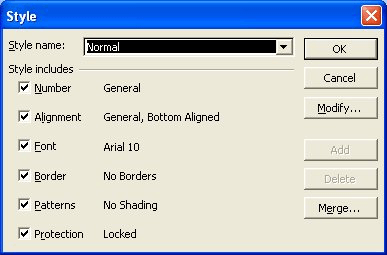Written by Allen Wyatt (last updated October 20, 2018)
This tip applies to Excel 97, 2000, 2002, and 2003
Once you have defined styles, you can apply them throughout your worksheet as you deem appropriate. Styles can be applied by following these steps:

Figure 1. The Style dialog box.
ExcelTips is your source for cost-effective Microsoft Excel training. This tip (2678) applies to Microsoft Excel 97, 2000, 2002, and 2003.

Best-Selling VBA Tutorial for Beginners Take your Excel knowledge to the next level. With a little background in VBA programming, you can go well beyond basic spreadsheets and functions. Use macros to reduce errors, save time, and integrate with other Microsoft applications. Fully updated for the latest version of Office 365. Check out Microsoft 365 Excel VBA Programming For Dummies today!
Standardize the formatting in your Excel workbooks quickly and easily with the Style feature. Here's how to use it.
Discover MoreExcel allows you to create styles that define how your data looks. At some point you may want to change a style you ...
Discover MoreStyles can make your worksheet formatting easier and more consistent. Here's how to copy styles from an existing workbook ...
Discover MoreFREE SERVICE: Get tips like this every week in ExcelTips, a free productivity newsletter. Enter your address and click "Subscribe."
There are currently no comments for this tip. (Be the first to leave your comment—just use the simple form above!)
Got a version of Excel that uses the menu interface (Excel 97, Excel 2000, Excel 2002, or Excel 2003)? This site is for you! If you use a later version of Excel, visit our ExcelTips site focusing on the ribbon interface.
FREE SERVICE: Get tips like this every week in ExcelTips, a free productivity newsletter. Enter your address and click "Subscribe."
Copyright © 2025 Sharon Parq Associates, Inc.
Comments